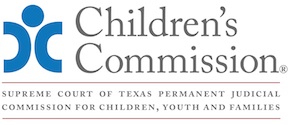5. Permanency Hearing Before Final Order
15 Minutes; up to 25 suggested best practice
Prior to Permanency Hearing (PH):
⧠ If first PH, scheduled within 180 days after DFPS named TMC
⧠ If subsequent PH, scheduled within 120 days of last PH
⧠ 10 days’ notice provided
⧠ DFPS Permanency Progress Report filed at least 10 days before PH and includes:
• Child’s Permanency Plan
• Summary of Medical Care
⧠ The court file includes:
• Notification of consent for medical care
• Education decision-maker Form 2085-E
• Visitation Plan
At Hearing:
⧠ Identify those present
⧠ Child in attendance
⧠ DFPS due diligence to locate and serve parties not present
⧠ Parent, alleged father or relative provided locating information for absent parents, alleged fathers, or relatives
⧠ Paternity issues/Paternity Registry
⧠ Need for language interpretation
⧠ Advise parents of right to counsel
⧠ Determine indigence
⧠ Indian/Native American Heritage
⧠ Citizenship issues, consulate notified
⧠ Compliance with orders/Service Plan and progress made
⧠ Parties and those present heard and provided opportunity to present evidence
⧠ If AAL has not seen child, form filed
⧠ Review Permanency Progress Report:
• Safety and well-being of child
• Child’s needs (medical/special)
• Child’s placement
• Child’s primary and alternative permanency goals
• DFPS reasonable efforts to finalize permanency plan
• Child provided opportunity to express opinion about medical care
• For child receiving psychotropic medication, whether child has:
o been provided non-pharmacological interventions.
o seen prescribing physician every 90 days for review
• Child’s education decision-maker identified, education needs and goals identified and addressed, and major changes in school performance or disciplinary events
• If 14 or older, transition services to assist from care to independent living
• For child with goal of APPLA:
o child’s desired permanency outcome; and
o whether APPLA best permanency plan; if so, provide compelling reasons why not in child’s best interest to:
▪ return home,
▪ adoption,
▪ placed with legal guardian, or
▪ placed with a fit and willing relative
⧠ Child receiving appropriate medical care
⧠ Child has regular, ongoing opportunities for age-appropriate normalcy activities, including those not in child’s service plan
At End of Hearing:
⧠ Determine whether to return child if parents willing and able to provide safe environment and in child’s best interest
⧠ Advise/Warn custodial rights and duties subject to restriction or termination
⧠ Incorporate changes or modifications to Service Plan into order
⧠ Likely date child returned home, placed for adoption, or placed in PMC
⧠ Set next PH within 120 days or sooner
⧠ Announce dismissal date and any upcoming hearings
Best Practices:
⧠ If lack of notice, consider resetting hearing to secure attendance
⧠ Engage parties with direct questions
⧠ Engage youth
⧠ Ask DFPS direct, child-specific questions about primary and concurrent goal
⧠ If not moving to positive permanency, set timelines and tasks to be completed prior to next hearing
⧠ AAL knowledgeable about child’s needs and legal objectives
⧠ Set next PH 90 instead of 120 days
⧠ For Older Youth:
• Family group decision-making
• Preparation for Adult Living (PAL)
• If turn 18 while in foster care:
o extended foster care and trial independence
o referrals to Texas Workforce Commission
o appropriate documents in possession before leave care
⧠ Ask the following questions:
• What is preventing this child from returning home today?
• How is my decision specific to this child and this family?
• Are there cultural issues we need to understand?
Well-being issues at Permanency Hearing:
Medical Care and Mental Health:
⧠ Summary of medical care:
• Nature of emergency medical care
• All medical and mental health treatment receiving and progress
• Any medication prescribed/progress
• Caregiver compliance with treatment plan
• Adverse reaction or side effects
• Diagnosis or diagnostic tests
• Activity to avoid that affect effectiveness of treatment
• Other info required
Education and Educational Decisions:
⧠ Enrolled and in appropriate grade
⧠ Remain in current school, even if placement changes
⧠ If change placement, determine:
• Where child wants to attend school
• Whether transportation is available
• Whether change coordinated with grading and testing periods
• Whether records/credits transferred
⧠ If 0-3, child assessed for developmental milestones through ECI
⧠ If 0-5, enrolled in Early Head Start, Head Start, or Pre-Kindergarten
⧠ Educational Decision-maker/Form 2085E on file
⧠ School supports and disciplinary issues
⧠ Extracurricular activities/normalcy
⧠ Evaluated for/receiving special education
⧠ If 14 or older, postsecondary education plan
